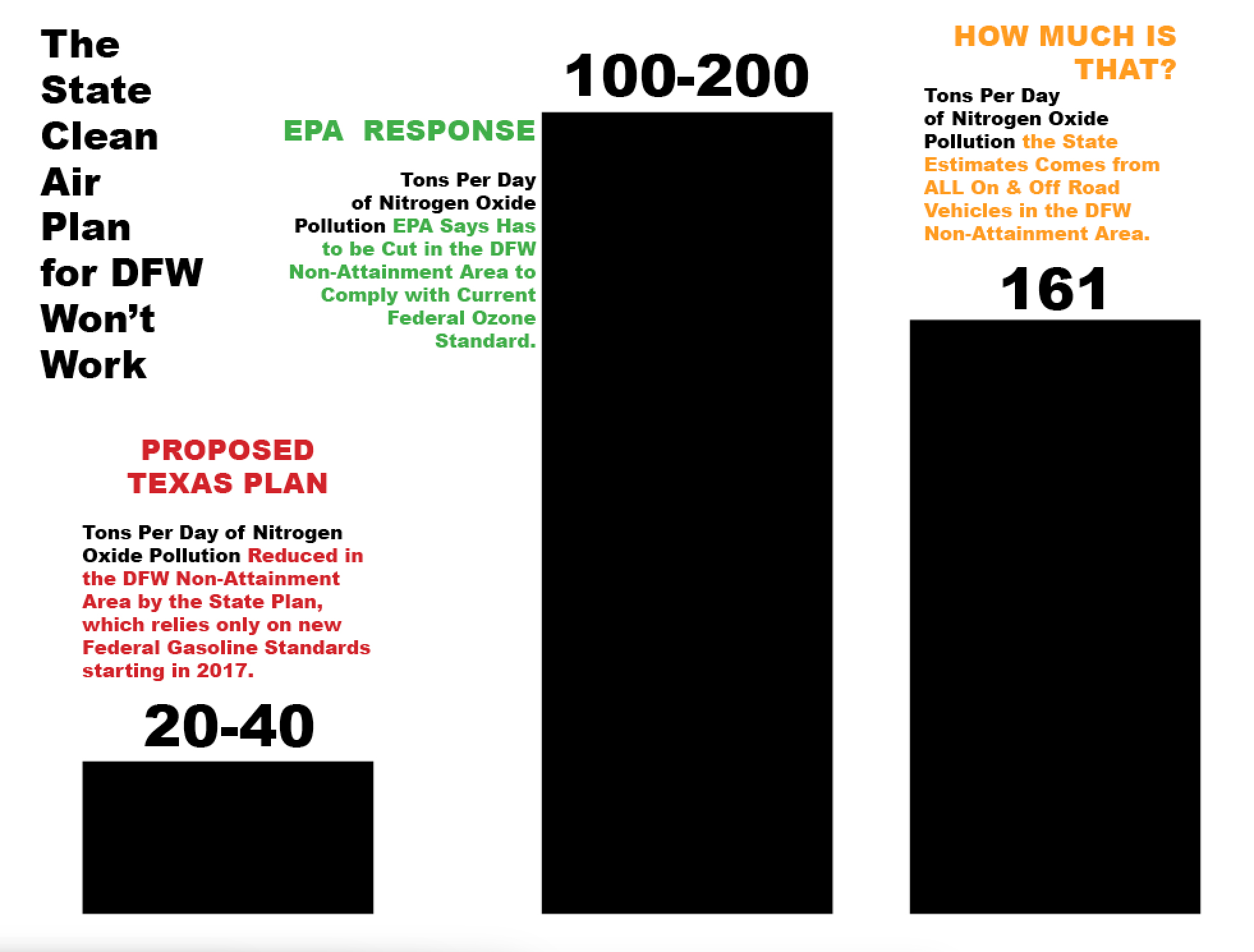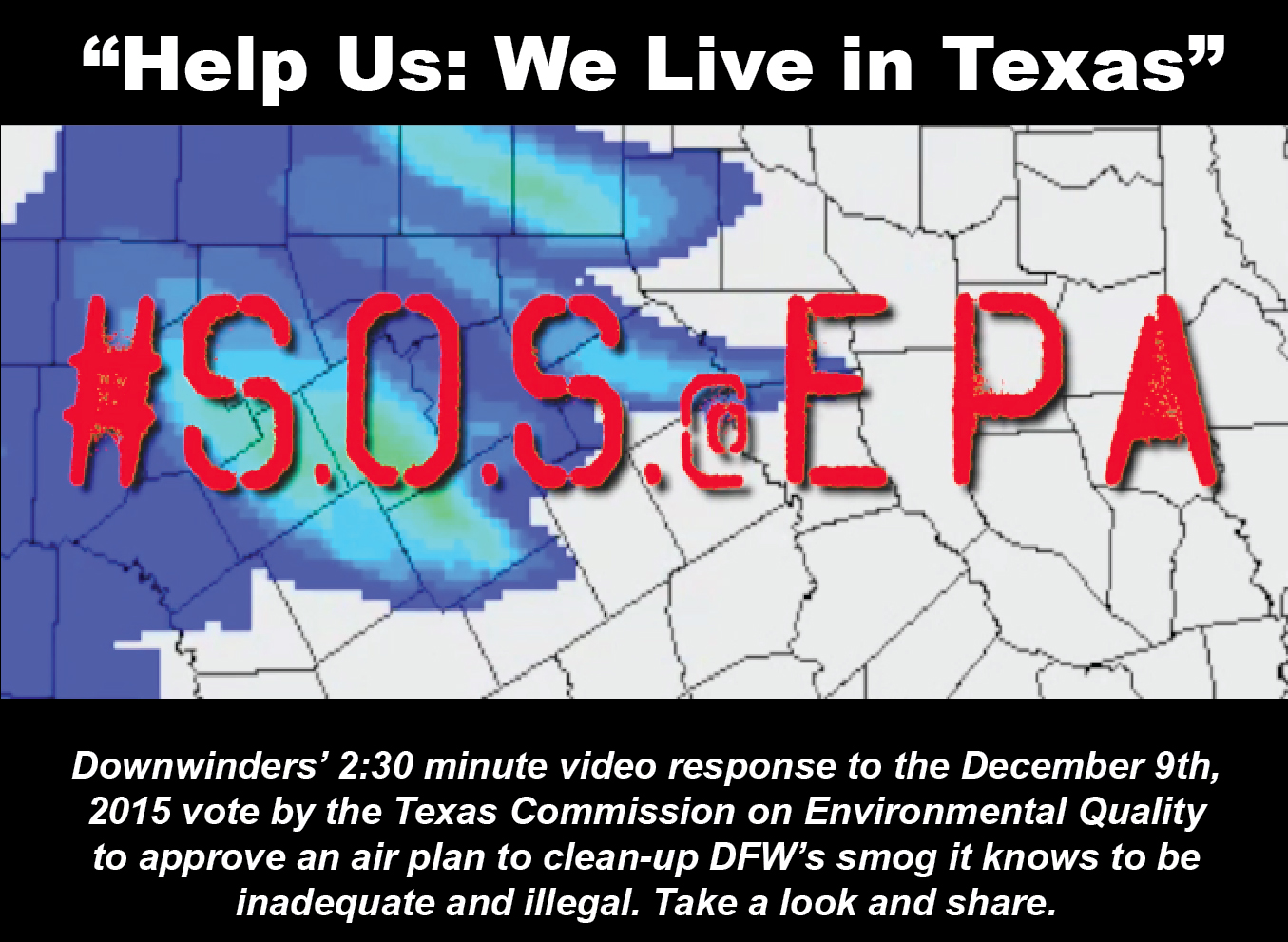Gas
Monthly TEDX Teleconference Tutorial on the Hazards of Fracking
 Founded by the late great Theo Colburn, who along with her co-authors of "Our Stolen Future" way back in 1996 just about invented the field of "endocrine-disrupting chemicals," the Endocrine Disruption Exchange (TEDX) is holding a monthly teleconference series begining in April focusing on chemicals associated with fracking.
Founded by the late great Theo Colburn, who along with her co-authors of "Our Stolen Future" way back in 1996 just about invented the field of "endocrine-disrupting chemicals," the Endocrine Disruption Exchange (TEDX) is holding a monthly teleconference series begining in April focusing on chemicals associated with fracking.
First up on Thursday, April 7th at 1 pm is Dr. Chris Kassotis, who's been looking at the connection between fracking chemicals and surface and ground water contamination near fracking sites. According to the TEDX release, Kassotis will speak about…
"…his recently published research demonstrating increased endocrine disrupting activity in surface and ground water near fracking wastewater spill sites, as well as nuclear receptor antagonism for 23 commonly used fracking chemicals. His studies have shown prenatal exposure to a mixture of those chemicals at likely environmentally relevant concentrations resulted in adverse health effects in both male and female C57 mice, including decreased sperm counts, modulated hormone levels, increased body weights, and more. Dr. Kassotis will also discuss his recent work showing increased receptor antagonism downstream from a wastewater injection disposal site.
Dr. Kassotis is a Postdoctoral Research Associate in the Nicholas School of the Environment at Duke University. He completed his PhD at the University of Missouri working with Susan Nagel to assess unconventional oil and gas operations as a novel source of endocrine disrupting chemicals in water, and the potential for adverse human and animal health outcomes from exposure.
This April get together is one of three briefings being given from now until June. According to a preview of the next two calls:
Thursday May 5, 2016, 1:00 pm Central – Dr. Shaina Stacy will discuss "Perinatal outcomes and unconventional natural gas development in Southwest Pennsylvania"
Thursday June 2, 2016, 1:00 pm Central – Dr. Nicole Deziel will discuss "A systematic evaluation of chemicals in hydraulic-fracturing fluids and wastewater for reproductive and developmental toxicity"
You have to go online and register as a participant if you want to listen in or ask quesitons via a live chat line.
How to Outflank HB40 in the Barnett Shale
 Last week, the EPA made an important admission.
Last week, the EPA made an important admission.
"Methane emissions from the oil and gas industry are significantly higher than previous official estimates, according to draft revisions of the U.S. greenhouse gas emissions inventory released Monday by the Environmental Protection Agency. At 9.3 million metric tons, revised estimates of 2013 emissions are 27% percent higher than the previous tally. Over a 20-year timeframe, those emissions have the same climate impact as over 200 coal-fired power plants."
This most recent analysis jives with other studies like the one from UTA/EDF that found Barnett Shale facilities leaking up to 50% more methane than previously estimated. In reaction to the information, EPA Chief Administrator Gina McCarthy was quoted as saying "we need to do more" to cut methane pollution.
In its last year in office the Obama administration is finally grasping that natural gas isn't the climate change wunderkind its promoters claimed and last week's announcement is the tacit admission they need to do more to crack down on oil and gas.
What has that got to do with DFW in 2016?
By Spring, the Regional office of the EPA is expected to announce that it has rejected the State's clean air plan for DFW in regard to its application of "Reasonably Available Control Technology." That means the state hasn't required the application of readily-available air pollution controls for major sources the way the Clean Air Act demands. Specifically, EPA staff have cited the failure of the state to lower the emission standards for the Midlothian cement kilns to reflect more modern technology. But it's not the only area where Texas fell short. There are no new pollution requirements for any oil and gas facilities in the state's plan either.
EPA rejection of the Technology section of the state's DFW air plan would mean the EPA would begin to draft its own clean air plan for the region. An EPA-drafted plan gives local citizens concerned about the health impacts of fracking an opportunity to persuade the Agency to use the plan to crack down on smog-forming Nitrogen Oxide (NOx) and Volatile Organic Compounds (VOCs) pollution in the Barnett Shale by requiring lower emission standards on all aspects of drilling and production.
While methane isn't considered a smog pollutant, it doesn't get emitted by itself. It comes out of a stack or valve, or leaks from a pipeline combined with smog-forming VOCs. So the more you control VOC pollution, the more you control methane pollution.
In light of last week's announcement, this gives EPA an extra incentive to go after VOC emissions in DFW even though the conventional wisdom is that it's combustion-generated Nitrogen Oxide pollution that really makes DFW smog so bad.
BTW, that conventional wisdom is under attack because the worst-performing air monitoring sites in North Texas are all in the Barnett Shale and heavily influenced by pollution from oil and gas facilities – both NOX and VOCs. It's possible to imagine a strategy to get smog numbers down in DFW solely by application of oil and gas emission regulations that can impact these important monitors – which drive the entire region's fate – even if the new regs have minimal impact on monitors elsewhere.
What kind of new regulations are we talking about?
* Start with the electrification of all 650 large natural gas compressors in the 10-county area.
* Do the same thing for all drilling rigs in the same 10-county area – nothing but electric.
* Emission standards for tanks and pipelines that reflect the latest leak-detection technology.
Inclusion of new EPA “Control Technique Guidelines" which are part of Agency's new methane rules. According to the Agency's release on the the new rules, “…reduction of VOC emissions will be very beneficial in areas where ozone levels approach or exceed the National Ambient Air Quality Standards for ozone."
Under the new rules, areas like DFW that host large concentrations of gas pollution sources and are officially categorized as “non-attainment” for smog receive "an analysis of the available, cost-effective technologies for controlling VOC emissions from covered oil and gas sources."
There's one more reason EPA has an incentive to go looking for all the cuts in oil and gas pollution it can find in the 10-county DFW non-attainment area: after the cement kilns, there's no other major sources the Agency can target locally.
Because while it has the authority in a federal clean air plan to regulate all pollution sources in that 10-county DFW non-Attainment area, the EPA can't write new emission standards for the East Texas coal plants located 100 miles outside of that 10-county area – even though those coal plants have more of an impact on North Texas smog than any other source of pollution. EPA (and us) can put pressure on the state to address these dinosaurs, but it can't touch them through a DFW air plan.
EPA staff has estimated it will take a cut of 100-200 TONS PER DAY in local smog-forming Nitrogen Oxide pollution for DFW reach the current 75 parts per billion smog standard. The State's "plan" – i.e. the federal gasoline fuel changes it relies on – only represents a 20-40 tons per day cut.
Where do the other 60 -160 tons a day in cuts come from?
To give you some idea of the size of that gap, the state estimates that all on and off road vehicles in the 10-county area will emit 161 tons per day of NOx in 2018.
State-of-the-art controls on all the cement plants might give you up to 15 tons a day. Electrification of the large compressors, another 15-16 tons per day eventually. After that it gets hard to find large volumes of cuts without the coal plants. And this is why the EPA should give cuts in VOC/methane a longer look than they have before – they're concentrated in the same areas where the region's worst-performing monitors are and they represent a huge source of climate change pollution that could also be another skin on the wall in addition to lowering smog levels.
There's no question the passage of HB40 has stymied grassroots progress toward more protective regulation of fracking by municipal governments in the Barnett Shale. It's thrown what was a fairly successful local movement into disarray. To date, there doesn't appear to be any consensus about strategies to combat the effects of the legislation.
But a way to outflank some of the impacts of HB 40 coming is coming down the pike, and it offers local fracktivists an opportunity to rally round a common, achievable goal – lowering emission levels across the board in the Barnett Shale. We can overlay a larger, stricter regional template for oil and gas regulation in place of 100 separate municipal ones.
What better way to nullify the efforts of the nullifiers in Austin?
New Comments from EPA on DFW Air Plan: It Won’t Work
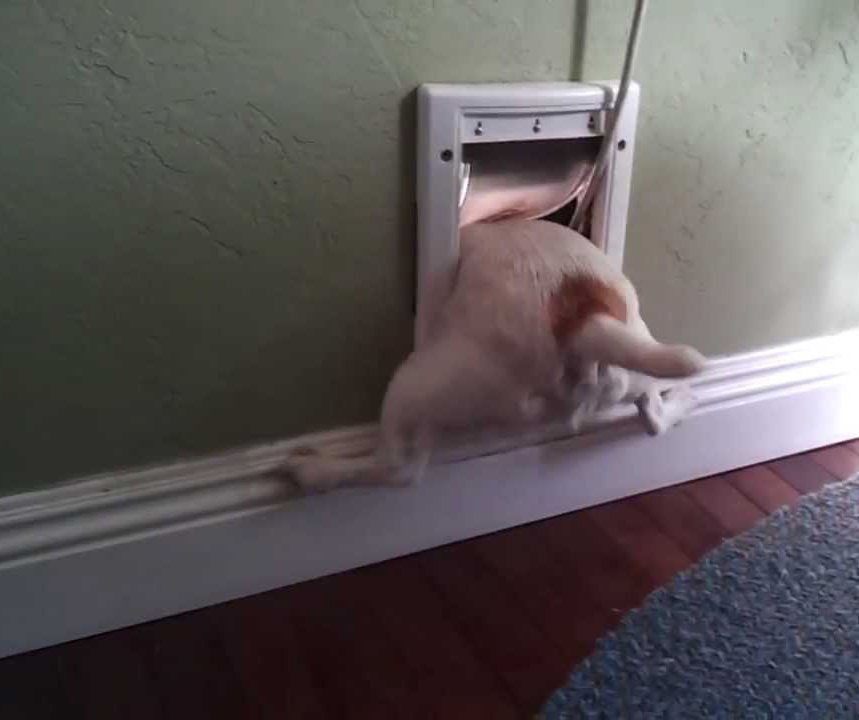 This plan won't work.
This plan won't work.
That's the simple message from the three pages of new comments Region 6 EPA staff submitted to the Texas Commission on Environmental Quality last month concerning its anti-smog plan for DFW.
That message begins with the cover letter, written by Mary Stanton, Chief of the State Implementation Plan Section for Region 6. "… additional local and regional ozone precursor emission reductions will be necessary to reach attainment by 2017."
How much in reductions? EPA estimates an additional 100-200 tons per day more in cuts of smog-forming pollution will be necessary to achieve compliance with the current 75 parts per billion ozone standard. "Without emission reductions on this scale, it is unlikely that the area will attain by the attainment date.”
To give you some idea of how large a number that is, TCEQ calculates that all gas and oil air pollution in DFW equals 78 tons per day, the Midlothian cement plants belch out over 18 tons per day, and all the power plants in the immediate DFW area, 21 tons per day. Totaled, those three sources add up to 117 tons of pollution a year.
All the cars and trucks on DFW roads are said to add up to 180 tons per day of pollution.
So the decrease in pollution EPA is saying is necessary to get down to the current ozone standard is huge.
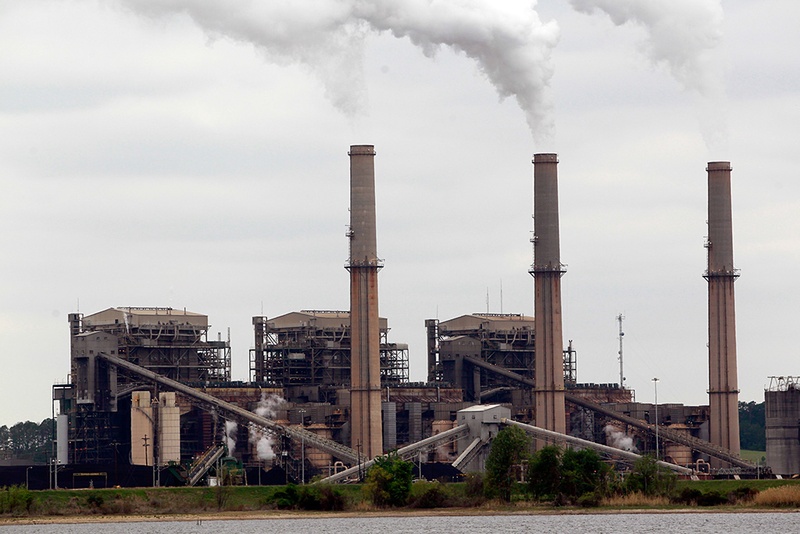
But take a look at those obsolete East Texas coal plants outside the boundaries the DFW nonattainment area. TCEQ says they account for a total of 146 tons per day. Add Selective Catalytic Reduction (SCR) which can get you up to 90% reductions in coal plant emissions, or close them down completely, add decreases from new controls on the cement kilns and oil and gas sources, and you're well on your way to amassing 200 tons a day of cuts in pollution.
Which do you think is more attractive to most DFW residents: permanently parking their cars, or putting new controls on the coal plants? Even though the coal plants harm the whole DFW airshed more than any other major source, they're not held accountable to the same regulatory requirements as sources closer to the center of the urban core, but which have less impact. Our cars must have special gasoline formulas in summer, we have to have HOV lanes, and we still go through Ozone Action Days, but the coal plants party like it's 1979. TCEQ is taking a hands-off approach to the plants and as a result the DFW region will continue to be in violation of the smog standard or huge cuts from other sources will be necessary.
TCEQ could have added new controls to the coal plants to the plan, but it chose not to. In fact, there are no new controls in the state's plan on any major sources of air pollution affecting DFW. EPA's new comments go to the heart of that choice. "Without additional emission reduction measures, we don’t see how the area will meet the standard of 75 ppb by the end of the 2017 ozone season," writes EPA staff.
EPA goes on to say TCEQ's computer modeling supporting it's do-nothing plan is "unrealistic," severely underestimating future smog levels, and delivering projections of decreases "that seem unlikely to be reached."
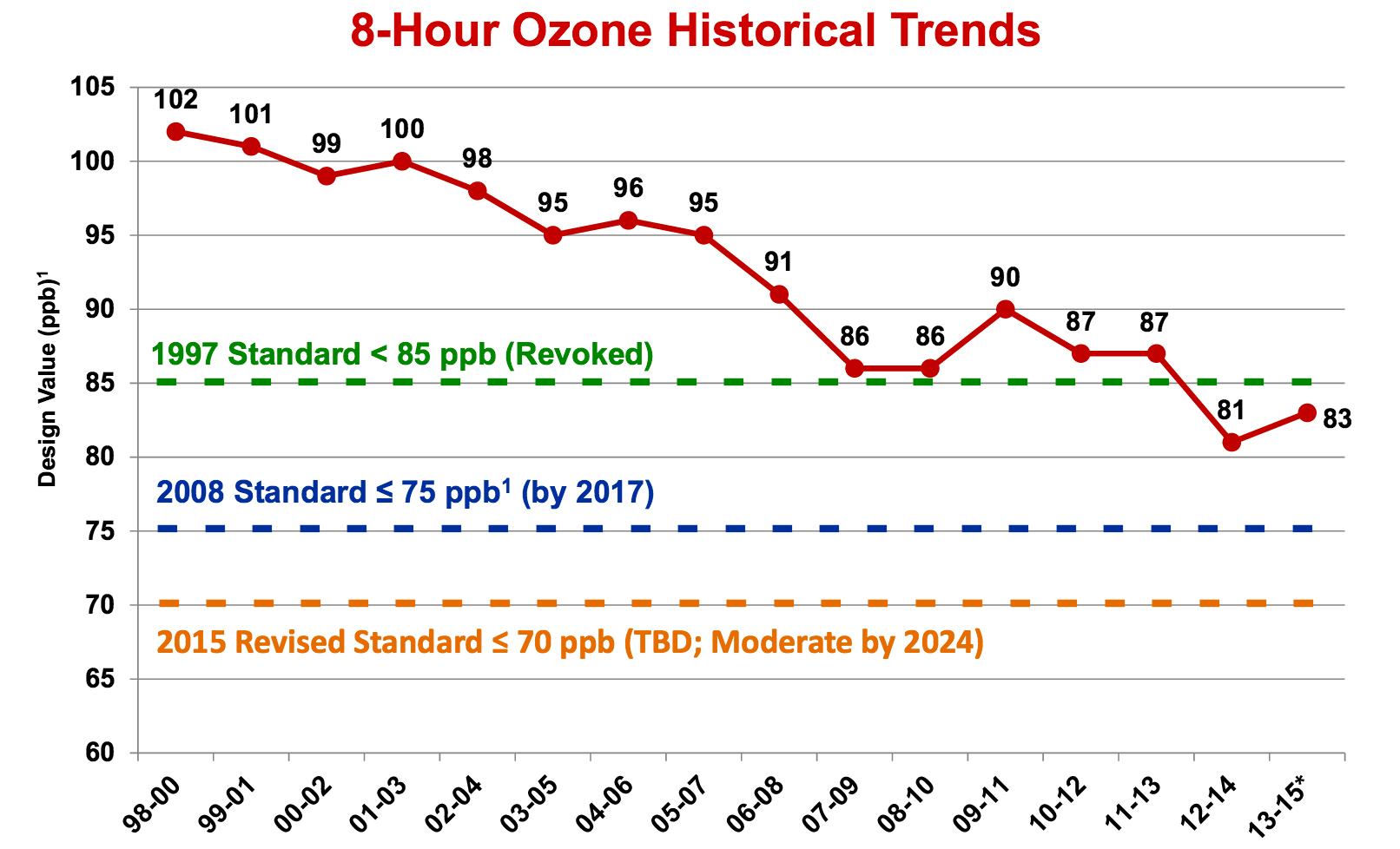 With this stance, EPA seems poised to reject this "attainment demonstration" part of the air plan as being insufficient. But it must wait to see how TCEQ responds to EPA comments about its modeling shortcomings and need for new cuts when the state officially submits its plan this July. Then, and ony then can the Agency approve or disapprove. We're going out on a limb here and predicting TCEQ won't change a thing, thus inviting EPA disapproval.
With this stance, EPA seems poised to reject this "attainment demonstration" part of the air plan as being insufficient. But it must wait to see how TCEQ responds to EPA comments about its modeling shortcomings and need for new cuts when the state officially submits its plan this July. Then, and ony then can the Agency approve or disapprove. We're going out on a limb here and predicting TCEQ won't change a thing, thus inviting EPA disapproval.
That's the pattern TCEQ has already established with its "screw you" response to the EPA's comments about the part of the plan dealing with "Reasonably Available Control Technology," or RACT, last February. This second part decides what new controls should be required of major sources of air pollution within the 10-County DFW "non-attainment" area – like the Midlothian cement plants and the thousands of oil and gas facilities checkerboarding the western half of the Metromess.
TCEQ says nothing new is required. EPA disagrees. EPA told TCEQ last year it had to do a new RACT review and lower the kiln's emission limits to account for a new generation of technology or it would have to reject the state's plan. TCEQ ignored the request, daring the EPA to disapprove. EPA seems more than willing to take them up on the offer.
And so while you're waiting for the state's computer modeling and suspect math to be rejected by EPA in July, you can probably expect to see EPA officially rejecting the RACT part of the state's plan sooner – maybe as soon as the next 60-90 days.
Despite the TCEQ going out of its way to submit an unacceptable plan to EPA, if the Agency pulls the trigger and begins a federal takeover of the DFW air plan, the Commission and the whole of Texas State Government will cry bloody murder about the usurpation of the state's authority and once again proclaim how "out of control" the EPA is on their way to filing suit.
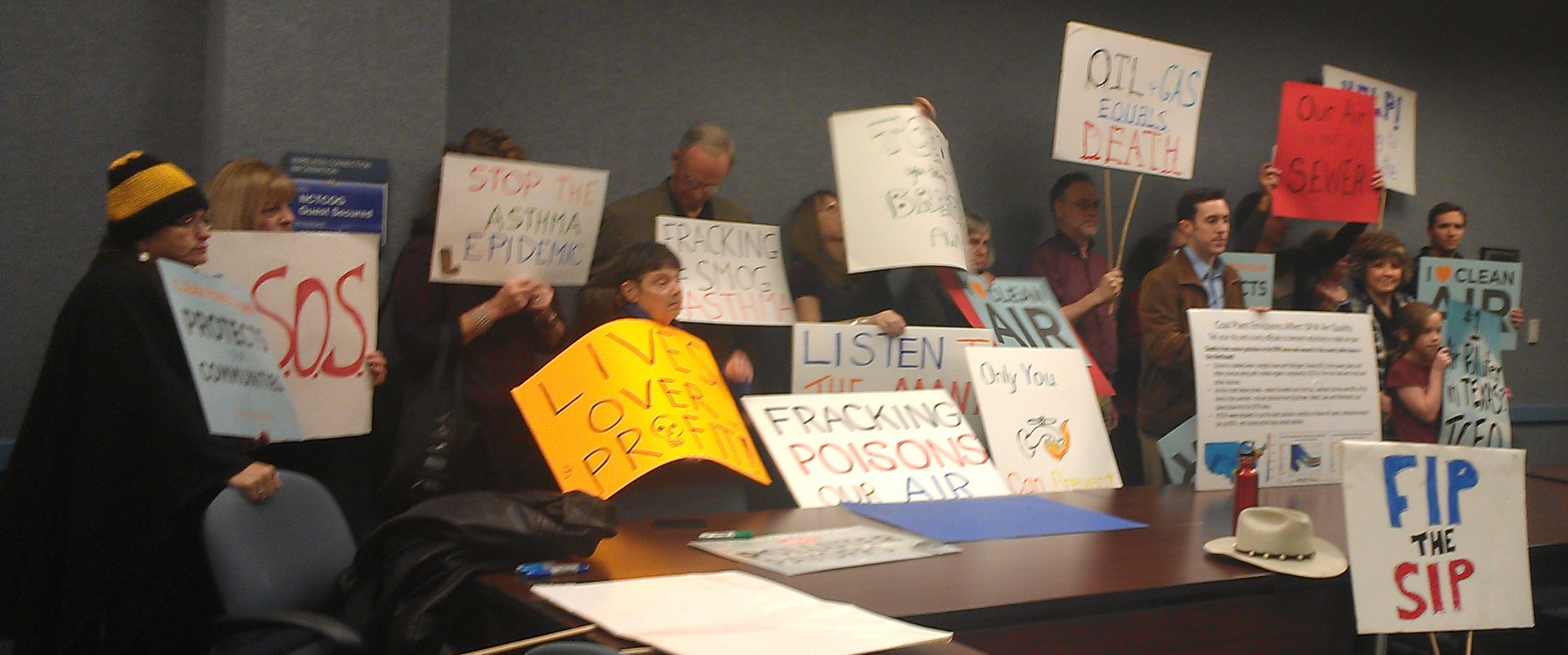 This is why the rowdy eruption of public sentiment for an EPA plan at the hearing in Arlington two weeks ago was so critical (Thank you again). It's also why we now have to be about the business of getting DFW local governments, hospitals and school districts to pass resolutions in favor of an EPA takeover. The Agency will need this kind of public support to counter all the criticism it will take from the Usual Suspects in Austin and DC. If you're interested in helping us pass one of these resolutions in your county, city, school or hospital district, please let us know at: downwindersatrisk@gmail.com
This is why the rowdy eruption of public sentiment for an EPA plan at the hearing in Arlington two weeks ago was so critical (Thank you again). It's also why we now have to be about the business of getting DFW local governments, hospitals and school districts to pass resolutions in favor of an EPA takeover. The Agency will need this kind of public support to counter all the criticism it will take from the Usual Suspects in Austin and DC. If you're interested in helping us pass one of these resolutions in your county, city, school or hospital district, please let us know at: downwindersatrisk@gmail.com
And as always, it's why you, and people you know should:
In Defense of Mary Suhm. No. Really.
Jim Schutze at the Dallas Observer came across an interesting piece of video the other day. It was the deposition of former Dallas City Manager Mary Suhm in the on-going lawsuit between jilted gas driller Trinity East and the City.
In their cross-examination, lawyers for Trinity East are asking Suhm about a secret (at least to the Council and the public) 2008 Memorandum of Understanding between the two parties trading Special Use Permits for gas drilling and production sites the company wanted to access on City-owned flood plain and park land – despite prohibitions on drilling in those places at the time of the agreement – in return for $19 million in upfront leasing payments.
Trinity East's lawyers want Suhm to say the agreement "guaranteed" the permits, and when the Plan Commission subsequently voted to deny them, and the City Council lacked the super-majority to override that denial, the City, by way of its agent in this matter Mary Suhm, defaulted on the agreement.
City of Dallas lawyers want Suhm to say Trinity East executives knew the drilling sites were off-limits at the time they signed the memo and, despite paying the City of Dallas $19 million before they got their permits, the company knew it was not a sure thing. According to the City's lawyers, what Trinity got was precisely what Suhm promised in the agreement: her best efforts to maneuver the company's permits through City Hall bureaucracy.
 The crux of this back and forth comes at about the 4:30 point of the five minute video when Trinity East's lawyer, on behalf of his client, asks, "What is it they get for their $19 million dollars?"
The crux of this back and forth comes at about the 4:30 point of the five minute video when Trinity East's lawyer, on behalf of his client, asks, "What is it they get for their $19 million dollars?"
Suhm says Trinity East "got the right to apply" for SUP permits.
But those permits cost considerably less than $19 million. What was Trinity East really paying for with those leasing checks, and did they get their money's worth?
Allow us to defend Mary Suhm.
When Trinity East wrote those checks, Suhm was riding high as City Manager and her command over Council affairs was already legend, especially as she negotiated the city budget through very tight times. Trinity knew the signature of a mere elected official was not sufficient. Those come and go at City Hall with hardly anyone noticing. It wanted the boss's John Hancock on the document and the boss was Mary Suhm.
Besides a perfectly legal and hefty bribe when the City needed it during the Great Recession, Trinity was investing in the power of Mary Suhm and her relationships with the Powers-That-Be. The company had every confidence as the ring master of the downtown circus, Suhm could make things happen that otherwise wouldn't happen. She was in control.
Trinity East wasn't wrong – in 2008. Had they pursued their permit requests in the next one to three years, there's every likelihood Trinity East would have received them.
But the company waited until 2011.
What had happened in those intervening three years?
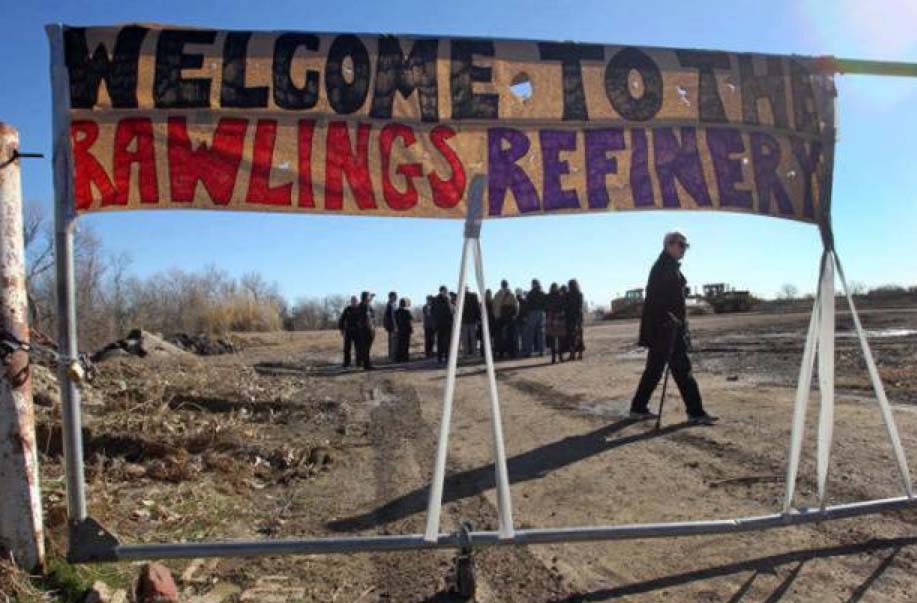
There was a drilling backlash beginning to reach full volume in the Barnett Shale, aided by a new national awareness of fracking as it spread to other parts of the country. Josh Fox's "Gasland" came out in 2010 and was nominated for an Academy Award in 2011. Burning tap water replaced a folksy Tommy Lee Jones as the face of gas drilling in North Texas. Citizen groups were sprouting in every city with drilling fighting for larger buffer zones and more pollution controls. There were stories in the media all the time. Because no health or environmental studies had been done on urban fracking, all kinds of new ones were launched or just being reported on for the first time.
In light of the new controversy, Councilwoman Angela Hunt helped drive the City to convene a gas drilling task force, giving residents a chance to organize around the issue before Trinity East even applied for their permits. Every concern – air, water, even earthquakes – that would later become ammunition for opponents showed up in this task force process first.
Scott Griggs ran for Dallas City Council from one of the districts targeted by new gas drilling permits and won on an anti-drilling platform against an incumbent. He joined Hunt as a fierce critic of Dallas urban drilling. Neighborhoods were showing new muscle.
And so the stage was set for more of an uphill fight than what Trinity probably would have confronted in 2010.
Mary Suhm must have taken note of some of this and sighed when Trinity finally put in for its permits. Now they show-up?
Still, let the record show she put on a stiff upper lip and gave 110% to the cause of getting Dallas City Hall to approve Trinity East's permits. She contorted bureaucracies. She muscled appointees and council members alike. She and her staff worked overtime to try to subvert every move of the growing opposition to Trinity East's permits. When the company lost, it wasn't because Mary Suhm didn't pull out all the stops, but despite the fact she did.
Now, we're pretty sure this is a defense the City of Dallas lawyers don't want to use, but we offer it up here in case they need to break the glass and begin building firebreaks in court to keep from paying back the $19 million.
These are only the most egregious examples residents know about.
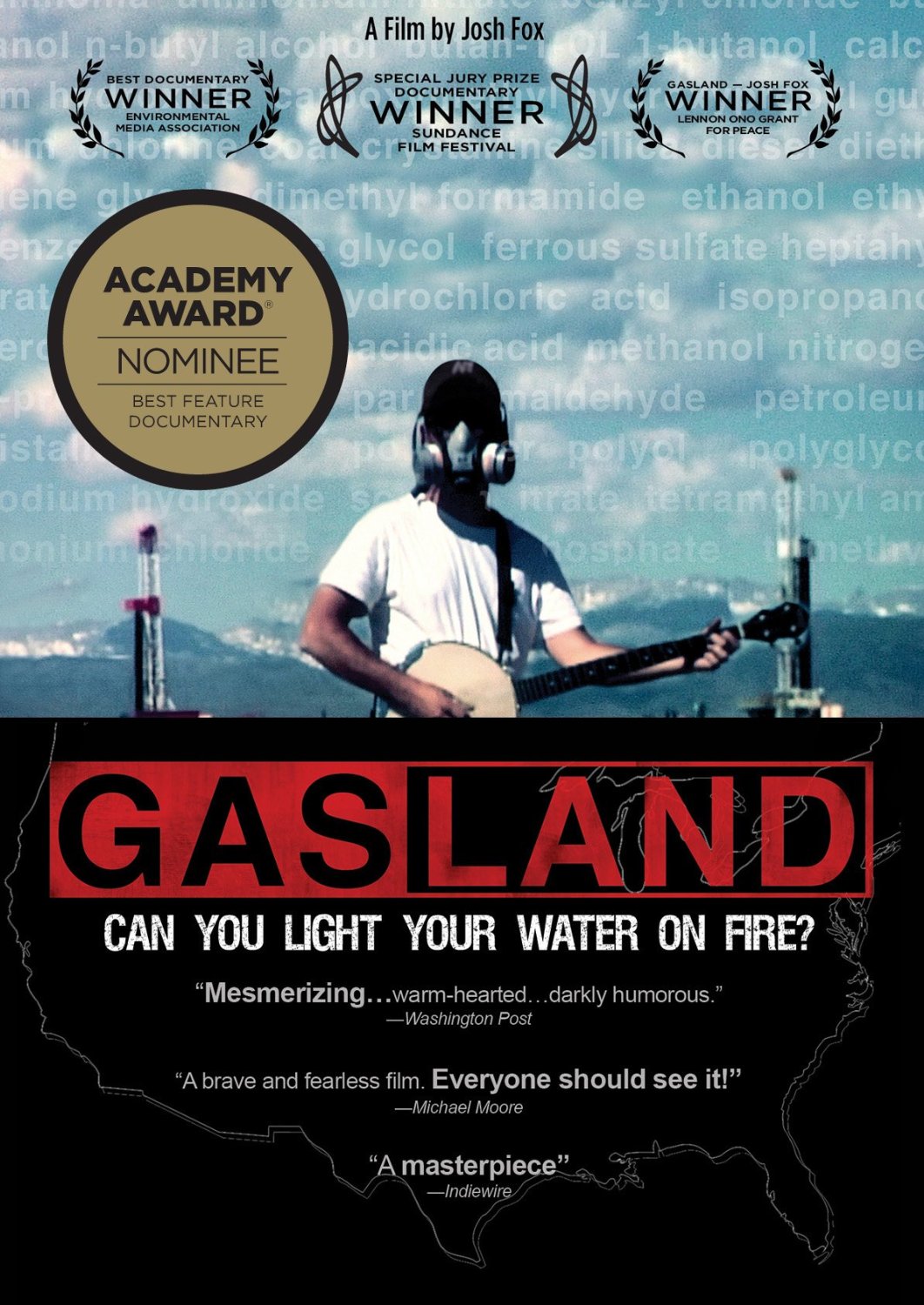
2011 Gas Drilling Task Force
In retrospect, it's easy to see Suhm's manipulation behind the last-minute Task Force endorsements of park and flood plain drilling. And when we say last-minute, we mean it.
Task Force members had already voted to keep the prohibition against drilling in these areas at a previous business meeting. The last meeting of the Task Force was supposed to be a pro forma affair that would ratify all previous recommendations and send them along to Council. Task Force member attendance was therefore down. This is when Task Force Chairwoman and former city council member Lois Finkelman chose to spring new votes on these two issues – and these two issues only – and won a reversal on each. Not only of the Task Force positions – but of current city policy, which of course didn't allow drilling in either area then.
Many excuses were used to justify this re-examination and re-vote that day, but none of them were the truth. Finkelman and staff were doing Suhm's bidding, and she was looking out for Trinity East. While it's not clear if Finkelman knew about Suhm's secret agreement, you can be sure Suhm, or someone on her behalf, made it clear to Finkelman it was VERY important to get these exemptions. Finkelman had been a friend to the clean air movement and other environmental causes during her tenure on the Council in the 1990's, but caved because of her relationship with Suhm, a belief she was helping the City out of a jam, or some other reason. At the end of the day, she weakened proposed city policy in accordance with what Trinity East wanted.
This is certainly something Trinity East got for its $19 million.
2012 Xmas Plan Commission Hearing on Trinity East Permits
Scheduled on December 20th, 2012, this was the first time gas drilling permits had been voted on for Dallas in three years, or pre-national outrage. It occurred before the Task Force recommendations had been considered and adopted into policy. In other words, after a call to reform its outdated drilling ordinance, and after a special Task Force had already been convened and issued its recommendations, Dallas was now about to grant three new permits, including one for a compressor station and refinery, under the old ordinance it was trying to replace. What was the rush? Why not wait and approve new permits until after the Task Force recommendations are written into a new ordinance? Because that would cause further public debate. More debate would highlight the problems of drilling in sensitive areas like park land and flood plains – still off limits in Dallas at the time.
In a transparent attempt to limit public awareness and participation even more, the City decided to hold this important hearing only five days before Christmas. Again, in retrospect, this has Mary Suhm's fingerprints all over it. And it almost worked. But just enough citizens showed up, representing enough well known groups and neighborhood organizations, and citing just enough new facts that had changed the situation since 2008 to win the climatic vote, 7 to 5 at 7:30 pm that evening. It was uncertain which way the decision would go right up until the very end.
Showing-up expecting to lose, instead citizens were elated. Overturning the denial would take a super majority of 12 votes on the Council – something that even then seemed unlikely. Citizens thought they had won. Mary Suhm had tried her best to rig the system, but the rigging failed. She tried again.
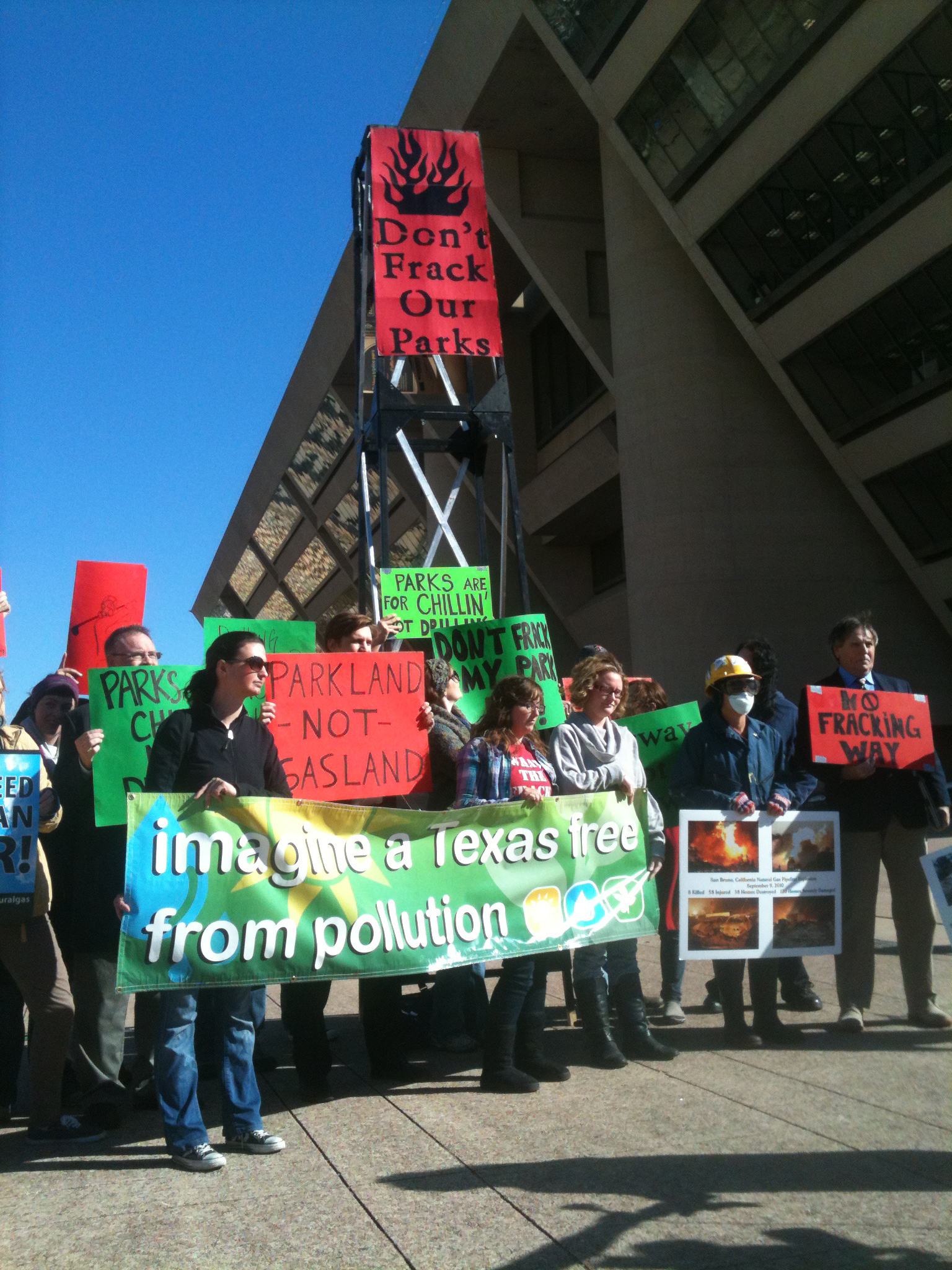
January- February 2013 Plan Commission "Reconsideration Vote" on Previous Permit Denial
Because she'd lost the December Plan Commission vote and knew she might not be able to get the 12 votes on the Council to overturn, Suhm had to do something creative. Viola! The Plan Commission would have a vote to "reconsider" their denial of Trinity East's permits only 21 days earlier. Nobody could remember the last time the Plan Commission even took such a vote. It was unprecedented. It was also Mary Suhm's handiwork.
That do-over decision came at a "special meeting" of the Plan Commission on January 10th, with a 6 to 5 vote to indeed take another vote on Trinity East's permits. This outcome, done under heavy police presence and with no public participation allowed, spurred one of the most iconic moments at Dallas City Hall in recent years – a 3 to five minute spontaneous standing crowd chant of "Shame."
You can see the speed at which Suhm is moving behind the scenes to engineer a better outcome after her unexpected defeat before Christmas. She's doing exactly what she promised Trinity East she would do. She's working the levers. Making things happen that would never otherwise happen. But now, it's costing her more to do so. The contortions of the system necessary to get the permits through are getting more twisted and harder to pull off gracefully. She's gone from talks with friends behind closed doors to forcing awkward "do-over" votes. It was obvious to the public there was something special about these Trinity East permits. Company officials had been dropping hints about some sort of an agreement with the City. Mayor Rawlings said permitting these sites "were a done deal" – although he didn't say why. It was getting messy.
Finally, on February 7th, the day the Plan Commission had scheduled the "do-over" vote, the Dallas Observer broke the story on the Suhm-Trinity East agreement. It was now clear what was driving the favoritism behind the treatment of the Trinity East permits by City Hall – going all the way back to the last-minute reversal of the Task Force, to the Christmas time hearing, to the pending "reconsider vote."
The timing could not have been worse for Suhm. We'll never know what the vote to reconsider might have been were there no headlines pointing to a City Hall cover-up. She may have thought she had the votes to keep the Trinity East permits alive. But with the story breaking that very day, the spotlight was too bright on the Plan Commission to take a new vote. Citizens won a reprieve and eventually a victory as the Commission requested the City Council deal with changing the current prohibitions against parkland and floodplain drilling before asking them to violate current ordinances again. That never happened. Instead, the three Trinity East permits were again denied by the Plan Commission in March 2013, albeit by razor-thin 8 to 7 and 9 to 6 margins.
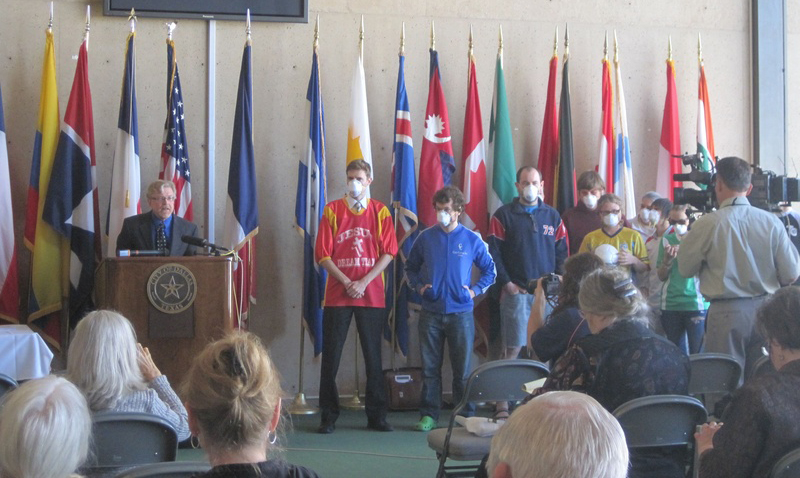 And that was that. Suhm was gone in four months. Officially it wasn't because of the cover-up of the Trinity East agreement, but of course everyone knew it was because the whole thing was headed to court one way or the other.
And that was that. Suhm was gone in four months. Officially it wasn't because of the cover-up of the Trinity East agreement, but of course everyone knew it was because the whole thing was headed to court one way or the other.
Although the Mayor tried to rally 12 votes on the Council to overturn, he couldn't do it. The prospect of the kind of rolicking citizen protests keeping the Plan Commission on the 6 o'clock news showing up at a Council Meetings could not have helped his cause at this point.
Urban fracking opponent Philip Kingston had replaced Hunt on the Council, Griggs was still there, and they were joined by enough other council members (Sandy Greyson, Monica Alonzo, Carolyn Davis, and Adam Medrano) to insure the Plan Commission vote would prevail.
At the end of the day, Trinity East walked away empty-handed. but make no mistake about it. Mary Suhm did all she could to subvert the system for Trinity East.
Had the Dallas Observer not revealed the secret agreement, she might have even won the day for the company and still be City Manager. Was it $19 million worth of subversion? At today's inflated rates, who knows? But other than funding a small army and declaring herself dictator of the Drilling Republic of Dallas, she did all she could.
If you're Trinity East you can complain about the outcome, but you can't complain about her effort. There were too many variables out of her control for once. Not the least of which was a vigorous, rowdy, neighborhood-based movement against urban fracking in Dallas that was taking the fight to the public square…and winning. Sometimes, even the most powerful City Manager is on the wrong side of history.
The Fastest Way to Get Big Cuts in Fracking Pollution? A Good DFW Smog Plan.
Public Hearing on DFW Air
Thursday, January 21st
6:30
616 Six Flags Road in Arlington
(Map)
If you're fighting fracking in your North Texas community, you have few options these days. The State of Texas is not only very not interested in hearing about fracking problems, it just passed a law that makes it illegal for your city to be too interested in hearing from you about those problems as well.
Enter another DFW anti-smog plan. In the past, these plans have been written by Austin and have tired their best to ignore the large volumes of smog-forming pollution from oil and gas sources. This new plan is no different. Left up to the State, there would be no new cuts in pollution from any major industrial source, including the gas industry.
But EPA may not leave it up to the state this time. There are already indications the EPA will reject the State's air plan for DFW as being inadequate and draft one of its own. That would be good news for local anti-fracking activists. Why? Because it could mean cutting lots and lots of different kinds Barnett Shale pollution throughout the region and help shift the costs of its harmful impacts to industry.
That's why if you're concerned about fracking, you owe to yourself to show-up at this Thursday's public hearing and tell the EPA you want them to reject the state's do-nothing air plan and instead implement a "Federal Implementation Plan" to clean up DFW's chronically smoggy air.
The Case For Cutting Oil and Gas Pollution in a DFW Anti-Smog Plan
1. The Oil and Gas Industry is a Large Source of Smog Pollution in North Texas
Look at the chart below for where and in what volumes the State believes smog-forming pollution will be coming from in 2017. The numbers are directly from the Texas Commission on Environmental Quality's DFW air plan. It's in TONS PER DAY.
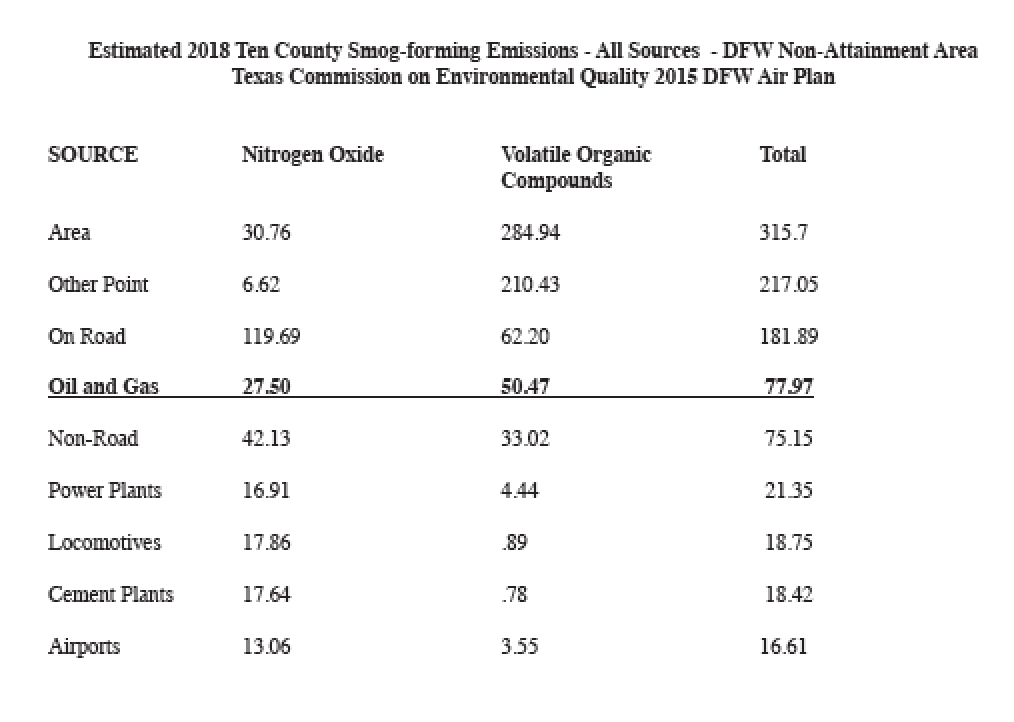
Oil and Gas pollution is the fourth largest category of smog pollution in North Texas. It's the fourth largest category for Nitrogen Oxide (NOx) pollution – the kind the State believes is most responsible for DFW smog. It's also the fourth largest source for Volatile Organic Compounds (VOCs), another kind of smog pollution that many of us believe plays a bigger role than the State thinks.
And these are the State's own numbers so you can be sure they're underestimates.
For example, a recent review of studies estimated that the Barnett Shale gas production was leaking up to twice as much climate-damaging methane as the EPA predicts. Methane doesn't escape by itself. If it's leaking, so are smog-forming VOCs that come up with the Methane.
Bottom Line: a huge new category of smog pollution has been created in DFW in just the last 8 years.
2. Oil and Gas Air Pollution is making DFW Smog Worse
Even the State admits that pollution from Barnett Shale industry sources contributes to DFW smog, the only disagreement is by how much.

Take a look at another chart – one that tracks the "average regional" smog level over the decades. Notice the downward trend that stops around 2009, where it continues to hover around 85 ppb? Can you think of anything that began happening in DFW in a big way around 2008-9 that would have stopped that downward trend?
Part of the problem is location. Historically, DFW's worst-performing air monitors, the places where the air quality always seems to be worse at the end of every "ozone action day" are located in the Northwest part of the Metromess – Keller, Grapevine, Denton, and Eagle Mountain Lake. Predominant winds are from the southeast to the northwest in summer time, pushing all of DFW's pollution toward Denton and Wise Counties.
Imagine what happens when you begin to envelope those same northwest areas into the country's largest urban gas field. In 2011, the State estimated that there was more VOC pollution coming from O&G sources in the region than from all the cars and trucks on the road in North Texas at the time.
This impact has not escaped EPA's notice. In official comments filed last February the Agency wrote that those Northwest monitors have not seen their ozone numbers come down as much as other parts of the region and suggest the sea of O&G pollution surrounding them may be the reason.
Thanks to the landmark UNT study that cloned the State's own computer air model for the DFW plan, we know exactly what kind of influence O&G pollution has on those monitors – or at least what the impacts are using the State's underestimated numbers.
If you took away all the estimated 2017 pollution from the Barnett Shale in DFW, you'd see drops in ozone of…
5.4 ppb at the Eagle Mountain Lake air monitor site
5.3 ppb in Keller
4.9 in NW Ft. Worth
3.6 ppb in Denton
These reductions in ozone would be enough to bring all of these DFW air monitor sites into compliance with the current 75 ppb standard, and allow all the sites except Denton to reach the new 70 ppb federal ozone standard more quickly than the deadline of 2025.
Conversely – you can see these numbers as the added smoggy burden the industry is imposing on DFW now. According to the State itself, O&G pollution are raising ozone levels as much as 3 to 5 ppb across large parts of the region.
3. Large Cuts in O&G Pollution = Less Smog in DFW
If oil and gas pollution is a large source of smog pollution, it makes sense that cutting that pollution would lead to less smog. Because of the UNT report, we know how much regional smog would decrease if we took some steps to stop down O&G pollution.
For example, just converting all 647 large gas compressors (point sources) in North Texas from diesel or gas to electricity – something the industry says it can do in areas with air pollution problems – would take over 16 tons of NOx pollution out of the air each and every day and lead to a drop of over 3 ppb at the Eagle Mountain Lake site and between 1 and over 2 ppb at 10 other air monitor sites. That may not sound like much, but it's enough to send most of them into compliance with the current 75 ppb standard. And that's not even accounting for the decrease in Particulate Matter pollution that would accompany such a transition. Because compressors are the industry's largest source of Nitrogen Oxides, they should be a big target for a new EPA air plan for DFW.
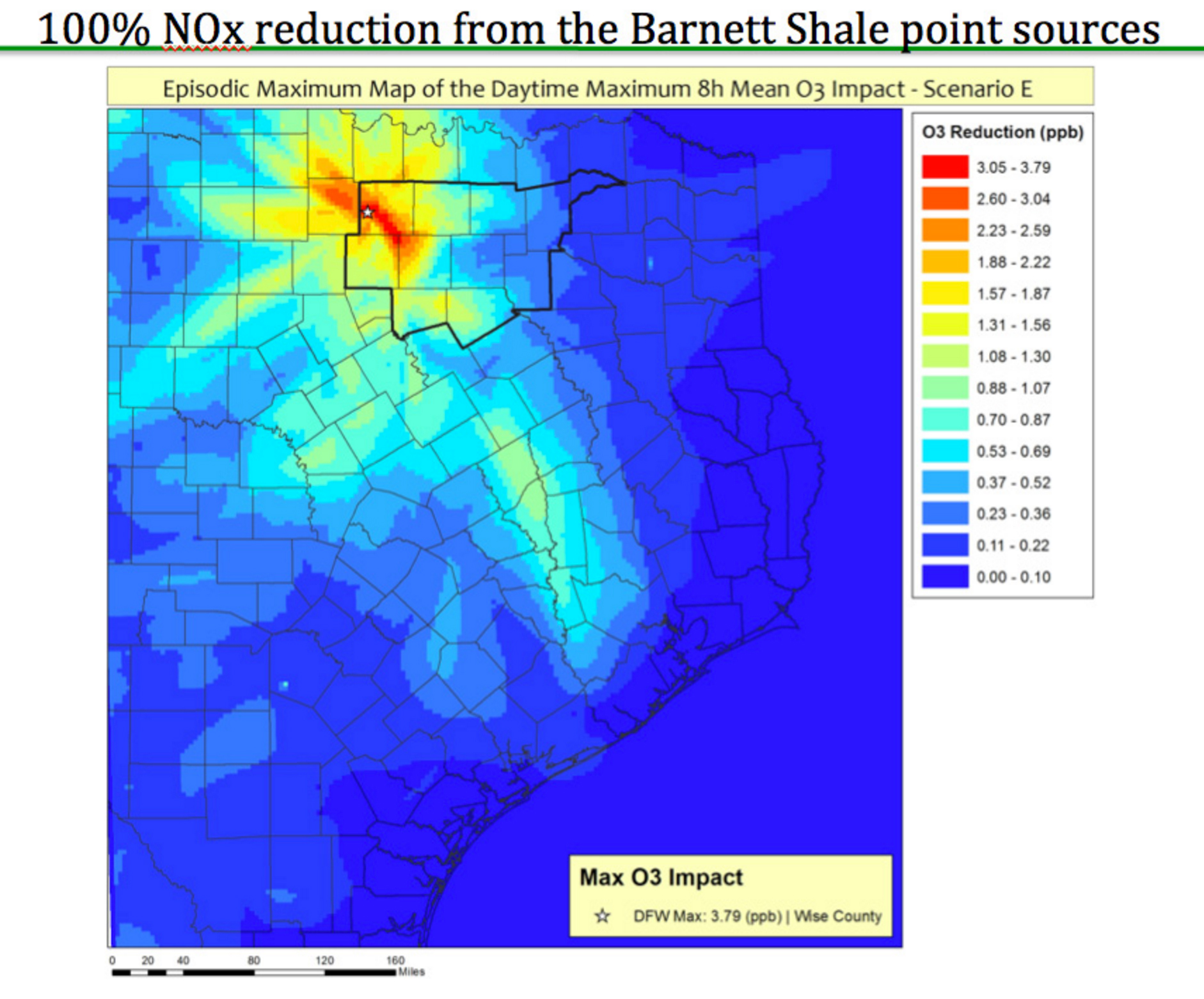 VOC pollution could also decrease under an EPA plan. Under the EPA's proposed new methane rules, there are a series of guidelines for controlling the pollutant that would also end-up cutting other smog-forming and toxic VOC pollution as a side-benefit. We're talking Benzene and all the other nasties the human eye can't see coming out of a storage tank or dehydrator.
VOC pollution could also decrease under an EPA plan. Under the EPA's proposed new methane rules, there are a series of guidelines for controlling the pollutant that would also end-up cutting other smog-forming and toxic VOC pollution as a side-benefit. We're talking Benzene and all the other nasties the human eye can't see coming out of a storage tank or dehydrator.
According to the Agency's release on the the new rules, “…reduction of VOC emissions will be very beneficial in areas where ozone levels approach or exceed the National Ambient Air Quality Standards for ozone." Areas like DFW – for the past two decades.
Under the new rules, areas like DFW that host large concentrations of gas pollution sources and are officially categorized as “non-attainment” for smog, could be the beneficiaries of new EPA-written “Control Technique Guidelines.”
According to EPA, these CTGs “provide an analysis of the available, cost-effective technologies for controlling VOC emissions from covered oil and gas sources. States would have to address these sources as part of state plans for meeting EPA’s ozone health standards.”
EPA gives states two years to include these controls in new air plans. Texas could include them now, in its current air plan, but it doesn't want to.
But if the EPA is writing our air plan instead, then these new VOC controls get put into the mix. Even a 50% cut in VOC emissions from the gas industry means 25 tons a day less air pollution from facilities over a wide area. That's worth fighting for.
If EPA rejects the state plan, it would take up to two years to implement a federal alternative. Even so, is there any other opportunity to cut as much oil and gas pollution in that amount of time? From new fedreal rules? Through local opposition? This is a chance to regionalize the fracking fight and reap large benefits.
Still steamed over HB40? Get mad AND get even.
Help us take the DFW air plan out of the State's hands, and give it to the EPA, where we can advance the cause in a way the state never dreamed of.
Thursday, January 21st
6:30
616 Six Flags Road in Arlington
THE CASE FOR EPA TAKEOVER OF DFW AIR PLAN
Sign the CHANGE.ORG petition to EPA urging the Agency to reject the State's plan.
It’s a Texas vs EPA Cage Match. Winner Takes All …The Air You Breathe
 JOIN OUR TAG TEAM EFFORT TO TAKE DOWN THE STATE OF TEXAS
JOIN OUR TAG TEAM EFFORT TO TAKE DOWN THE STATE OF TEXAS
BUT WATCH OUT – THEY PLAY DIRTY
NEXT THURSDAY EVENING
JANUARY 21st
6:30 PM
616 Six Flags Road
First Floor HQ of the
North Central Texas Council of Governments
There's an important bureaucratic cage match between EPA and the State over how clean your air should be.
The state says just by hitching a ride on already-in-progress federal gasoline mix for cars and trucks, DFW ozone, or smog, will drop to levels "close enough" to the current federal smog standard of 75 parts per billion (approximately 78 ppb) . No new cuts in pollution required.
The EPA says not so fast – "close enough" may not be good enough this time around and you're not following the Clean Air Act in laying back and requiring no new cuts in pollution.
EPA has told Austin a failure to follow Clean Air Act rules will force it to take responsibility for the plan away from the State.
Is this something you want? If so, you should show up and next Thursday evening to give the EPA the political support it needs to pull the rug out from under the State.
WHAT HAS THE EPA ALREADY SAID ABOUT THE STATE'S PLAN?
Along with comments from DFW residents, environmental groups, doctors, industry and elected officials, EPA itself will weigh-in with written comments on the TCEQ plan by the deadline of January 29th.
But we don't have to wait that long to find out what EPA really thinks about what the State is proposing. Last year, EPA provided 11 pages of comments on exactly the same plan.
1) This plan won't work without more cuts in pollution
What EPA Said:
"Based on the monitoring data and lack of additional large reductions in NOx within areas of Texas that impact DFW, it is difficult to see how the area would reach attainment in 2018 based solely on federal measures reductions from mobile and non-road….The recent court decision that indicates the attainment year will likely be 2017 for moderate classification areas such as DFW, makes it less clear that the area will attain the standard by 2017 without additional reductions."
What EPA Meant:
It wasn't looking good when the deadline for reaching the 75 ppb standard was 2018 and the State didn't require any new cuts in air pollution, but now that the deadline is 2017, your do-nothing "close enough" plan is even less likely to work.
2) Your case for doing nothing isn't very good
What EPA Said:
"While the State has provided a large chapter on Weight of Evidence, the principal evidence is the recent monitor data. The monitor data does not show the large drops in local ozone levels and therefore raises a fundamental question whether the photochemical modeling is working as an accurate tool for assessing attainment in 2018 for DFW."
What EPA Meant:
Actual measurements of smog in DFW seem to undercut your claim that the air is getting cleaner faster. Maybe your computer model that's driving the entire plan isn't all that great. (And this was before smog levels went UP after the summer of 2015 – something not predicted by the State's model….)
3) Review pollution limits for the Midlothian cement kilns, or we'll reject your plan
What EPA Said:
"Because of significant changes in the type and number of cement kilns in Ellis County,…TCEQ's rules need to be reevaluated to insure these reductions are maintained, and the emission limits reflect a Reasonably Available Control Technology (RACT) level of control as required by the Clean Air Act…Failure to conduct a thorough RACT analysis for cement kilns which would include appropriate emission limits would prevent us from approving the RACT portion of the attainment plan submittal."
What EPA Meant:
Update your kiln pollution limits, or this part of the plan is toast. (Texas chose not to perform this update, in essence, giving EPA the bureaucratic finger.)
4) Oil and Gas pollution seems to be keeping the region's smog levels higher than they should be
What EPA Said:
"Recent NOx trends (Figure 5-10 in TCEQ's Proposal) indicate a fairly flat NOx trend for several NO monitors in the western area of the DFW area (Eagle Mtn. Lake, Denton, and Parker County monitors). These monitors are in areas more impacted by the growth in NOx sources for Oil and Gas Development that seem to be countering the normal reduction in NOx levels seen at other monitors due to fleet turnover reductions (on-road and Nonroad). These higher NOx levels in the modeling domain that seem to be fairly flat with no change since 2009
raise concern that the area is not seeing the NOx reductions needed to bring the ozone levels down at these monitors."
What EPA Meant:
Since the historically worst-performing air pollution monitors in DFW are located in exactly the same area as a lot of gas and oil activity, and these monitors haven't been seeing the expected decrease in smog you predict, maybe you ought to think about cutting pollution from those oil and gas sources. Like we said, this plan needs more cuts in pollution.
5) Your own evidence supports cuts in pollution from the East Texas Coal Plants
What EPA Said:
"The TCEQ provided an evaluation of emissions from all of the utility electric generators in east and central Texas. However, the discussion in Appendix D on the formation, background levels, and transport of ozone strongly supports the implementation of controls on NOx sources located to the east and southeast of the DFW nonattainment area. How would a reduction in NOx emissions from utility electric generators in just the counties closest to the eastern and southern boundaries of the DFW area impact the DFW area?"
What EPA Meant:
Despite your protests, the State's own analysis shows cuts in pollution from the East Texas Coal Plants have a big impact on DFW smog levels and supports the argument for putting new controls on them. Did you actually run your fancy-dancy computer model to see what would happen if you did that? (No, the State did not. But UNT and Downwinders did.)
WHY WOULD AN EPA PLAN FOR DFW AIR MAKE ANY DIFFERENCE?

If the EPA rejects the State's plan, the clock begins ticking: the State is warned it has to write a new plan and, meanwhile, EPA begins to write its own. If the State doesn't turn in a plan the EPA finds acceptable in 24 months, the EPA plan is implemented instead.
The State has no interest in any new cuts of pollution from any sources. It thinks it's plan is already "close enough."
If the EPA is writing the plan, citizens can use the new UNT study to show the Agency which cuts get the largest drops in smog – using the State's own air model.
We can use Dr.Haley's study to show the approximate economic and public health benefits of those cuts.
More change happens if EPA is writing the plan.Enough to finally get DFW safe and legal air? We don't know until we try. The alternative is doing nothing.
“Help Us. We Live in Texas.”
(Dallas)— “Help Us: We Live in Texas.”
That’s the plea of a video released today by a local clean air group claiming the state has so intentionally sabotaged Dallas-Fort Worth anti-smog efforts that residents now need EPA to take over the job.
“Texas is as likely to enforce the Clean Air Act in 2015 as Mississippi was to enforce the Voting Rights Act in 1965,” said Downwinders at Risk’s Director Jim Schermbeck, echoing a line in the video.
The group posted the 2:42 minute piece, titled “SOS @EPA” in response to this morning's vote by the Texas Commission on Environmental Quality (TCEQ) to move forward with a new anti-smog plan for DFW that the Commission has already been told by EPA falls short of legal and regulatory requirements.
In the video, footage from a Downwinders’ street action calling for help at EPA Regional Headquarters in downtown Dallas November 5th is spliced with facts about DFW’s 20 years and counting chronic smog problem. Central to the group’s charge is the state’s unwillingness to put new controls on major sources of industrial air pollution like the Midlothian cement kilns, East Texas coal plants, and gas facilities – despite the fact their own air modeling shows those controls could bring smog down enough to comply with the Clean Air Act.
Today’s vote by the TCEQ is the second in 12 months concerning the same DFW air plan. Its goal is to get from an average of 83 parts per billion (ppb) of smog in 2015 down to the current federal standard of 75 ppb by 2017.
However, the state only estimates a best-case result of almost 78 ppb. Despite that shortfall, there are no new pollution controls required of any major sources. Over the last 20 years, the state has written five anti-smog plans for DFW. None has accomplished its goal on deadline, and regional smog levels actually rose this year.
Besides once again failing to hit is mark overall, the EPA has already told the State its formal assessment of modern pollution controls for those major sources needed revisiting to be legal. TCEQ refused to comply with EPA and today’s plan contains exactly the same assessment as the one EPA has already said isn’t sufficient, making that part of the plan instantly illegal. Although EPA gives state governments authorization to write smog plans for their own metropolitan areas, it still has final approval based on criteria listed in the Clean Air Act.
One of the points made in the group’s video is that studies by local hospitals have shown DFW childhood asthma rates to be as much as four times the state average and over twice the national average, making the need for cleaner air imperative.
“The health of seven million Dallas-Fort Worth residents is being held hostage by a state government hostile to the goal of clean air. Only federal intervention can save us,” said Schermbeck.
The video can be found at Downwinders at Risk’s website (downwindersatrisk.org), it’s Facebook page, twitter account (@cleaner air) and the group’s YouTube channel (Downwinders’ TV).
__________________________________
SEND EPA ADMINISTRATORS A MESSAGE TO REJECT THE STATE'S PLAN AND WRITE ONE OF ITS OWN:
https://www.downwindersatrisk.org/featured-citizen-action/
AND
SIGN THE CHANGE.ORG PETITION:
https://www.change.org/p/ron-curry-and-gina-mccarthy-environmental-protection-agency-reject-texas-smog-plan-for-dallas-ft-worth
________________________________________
LIKE THIS VIDEO? LIKE OUR WORK? THINK IT'S IMPORTANT?
THEN PLEASE MAKE A TAX-DEDUCTABLE CONTRIBUTION TO DOWNWINDERS BEFORE DECEMBER 31st.
DONATE HERE.
________________________________________
WHY?
It might be hard to believe, but despite being the nation’s fourth largest metropolitan area, AND being in constant violation of the Clean Air Act for smog since 1991, AND having higher annual smog numbers than Houston, AND being singled out by EPA as one of only a handful of areas expecting to STILL be in violation of the Clean Air Act in 2025, there’s still only one professional staff person devoted to cleaning up DFW air: the staff person you pay for when you contribute to Downwinders at Risk.
Besides community organizing on the ground, Downwinders also had to go out and build a new committee of local officials concerned about dirty air after the traditional regional air quality planning process broke down. That committee produced a first-ever study showing how new pollution controls on the kilns, coal plants, and compressors could bring smog levels down enough to comply with the Clean Air Act. Our study was used by the Dallas Commissioners Court to pass a resolution requesting new controls on the East Texas coal plants in October. Had it not been for our new committee, there would have been no local officials involved in the DFW air quality planning process at all, and noaccountability for a state government that isn’t interested in our lungs.
Want to get just basic information about DFW air pollution? There are no dedicated environmental beat reporters left in DFW. Downwinders fills this gap as well, providing the only source of reliable and timely information on DFW air quality issues.
Need technical or organizing training? We do that too. Many of you know we just sponsored our first conference – the four-day Root and Branch Revue, featuring a graduating class of 70 grassroots activists from our first “University of Change.”
When you give to Downwinders, you fund the last line of defense between your lungs and a state government that doesn’t believe smog is that bad for you.
And when you give to Downwinders, you know you’re giving to a group with a two decade proven track record of getting results.
That’s our pitch. We get your donation. You get our best effort at protecting your lungs.
On behalf of myself, and the Downwinders at Risk board, thank you for your consideration.

Jim Schermbeck
Director, Downwinders at Risk
Peak Shale? More Energy from Renewables Than Gas by 2020
 In late November, a new report by Goldman Sachs came out predicitng “New wind turbines and solar panels worldwide will provide more energy over the next five years than U.S. shale-oil production has over the past five."
In late November, a new report by Goldman Sachs came out predicitng “New wind turbines and solar panels worldwide will provide more energy over the next five years than U.S. shale-oil production has over the past five."
“The leading renewable-energy technologies will add the equivalent of 6.2 million barrels of oil a day to the global energy mix, exceeding the 5.7 million barrels a day pumped from U.S. shale oil wells since 2010 …" According to the study, "the biggest shift will occur over the next decade as demand for renewable energy, LED lighting and plug-in vehicles accelerates.”
“Wind and solar are on track to exceed 100 gigawatts in new installations for the first time,’ the authors wrote. "Solar and wind energy are saving a gigaton of carbon dioxide emissions annually and the market for four leading low-carbon technologies is now worth more than $600 billion per year.”
It's possible we're seeing the "Bridge Fuel" run out of road as a new era in power generation gears up.
Study: Combusted PM Pollution Up to Five Times as Lethal As Non-Combusted Kind. Burning is Bad.
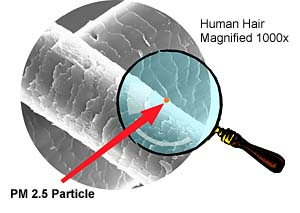 Long term exposure to small particulate pollution from combustion sources, specifically coal-fired power plants, is up to five time more likely to kill you through heart damage than other forms of natural or human-made "PM."
Long term exposure to small particulate pollution from combustion sources, specifically coal-fired power plants, is up to five time more likely to kill you through heart damage than other forms of natural or human-made "PM."
That's the conclusion of new comprehensive study comparing risks from breathing-in the tiniest specs of soot from combustion sources for over 450,000 Americans in 100 cities from 1984 to 2014. Published in the journal Environmental Health Perspectives this month to coincide with the Paris climate talks, the study has ten co-authors and promises to be a milestone in the long fight to reduce this form of pollution.
Combustion of any sort releases fine and ultra-fine particles of soot, or "Particulate Matter" in the often antiseptic regulatory-speak of environmental regulation. These specks differ from dust particles or fireplace soot in that they're much, much smaller and so can be inhaled deeper into the lungs, and then, even pass from the lungs into the blood steam to affect other organs and systems. It's their tiny size that makes PM pollution dangerous on its own. Over the last 30 years, scientists and public health officials have gone from being worried about PM 10 (10 microns or less), to PM 2.5 (2.5 microns or less – about 100th of the width of a human hair), to Ultra-fine Particles.
But soot from combustion also carries residues of whatever was being burned in the facility it came from, and this makes it doubly toxic. If you're burning coal, the soot might carry bits of Mercury, Arsenic, Cadmium and Lead, for example. The new study says that difference is what really drives up risk for people breathing-in coal plant PM.
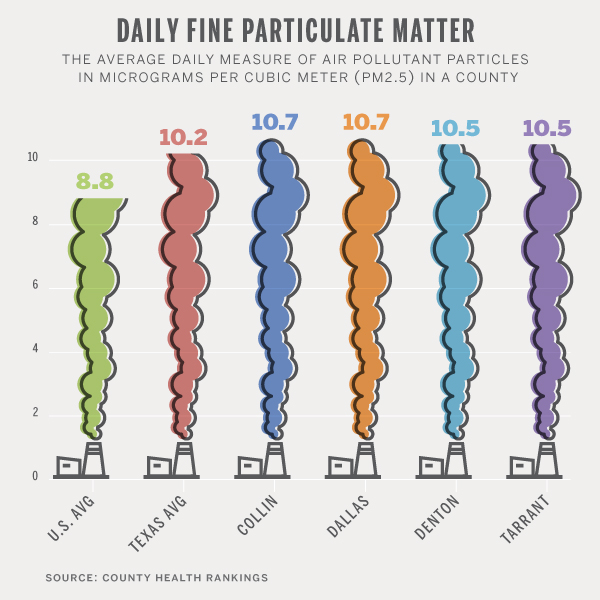
Locally, DFW is chock full of large industrial sources of combustible PM.
We're surrounded by five coal plants in an arc on its northeastern to southeastern side. That means we're downwind of their pollution, including their particulate matter pollution, most of the year. Their impact on local smog levels has recently been chronicled by Downwinders' study from UNT.
PM Pollution would follow approximately the same patterns although heavier particles fall closer to the source, while the really fine particles drift for hundreds or thousands of miles. Luminant’s 2013 Emissions Inventory submission reports 1400 tons of 2.5 particulate matter in a single year at its Big Brown plant. And that may be a severe underestimate. Big Brown’s two Units have exceeded the Texas SIP’s opacity limit of 30 percent on thousands of occasions over the past decade.
Luminant's Martin Creek plant released 2,018 pounds of mercury into the environment in 2013, according to the Toxic Release Inventory, and in fact Texas hosted the top three mercury polluters among all coal plants in the US that year.
Closer in, there's the three Midlothian cement plants with a total of four kilns now. Modernization and controls forced by 20 years of campaigning by Downwinders have brought the numbers down dramatically, but they're still huge facilities that deal in both a dusty raw material, and burning lots of coal and industrial wastes like tires and used oil, and even car parts, to turn that into a higher grade of raw material. When you burn exotic materials with coal, you turbocharge the toxicity of the PM pollution even more. In 2013, the last year the state has numbers posted online, the three cement plants released approximately 440 tons of 2.5 PM pollution.
But cement plants weren't included in the study and so the risk evaluations in it for DFW are underestimated.
Midlothian is also the home to the very large French-owned Amersteel (formally Chaparral Steel) secondary steel mill and steel mills were included as a source category in the study and were also associated with a higher mortality rate. Just about every 18-wheeler trailer you see on local highways loaded with crushed cars is headed to this facility – across the street from the TXI cement plant. Imagine the residues on the soot from melting down thousands of used cars into liquid metal. In 2013, the plant released 133 tons of PM 2.5.
But by far, the largest PM polluter in the DFW area, bar none is the Owens-Corning fibreglass plant in north Waxahahchie, along I-45. It released a whopping 300 tons of PM 2.5 pollution in 2013 alone. No other facility comes close – not the cement plants or the steel mill down 287. Not the GM plant in Arlington. It's not known how much of Owens-Corning PM is combusted however. It could be from the manufactiuring process.
Diesel engines in vehicles were also included, and the study found they has an association with higher mortality, but not nearly as significant as coal plants or steel mills. There's been a steady stream of studies tying highway pollution to respiratory and neurological illness among near-by populations, especially children. Most of the risk is assigned to PM pollution, and most of that is coming from diesels.
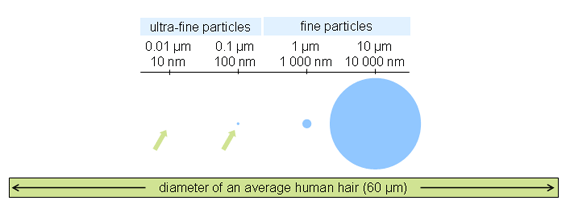
Just as important as the conclusion that coal-combusted particulate matter is significantly more dangerous than your average speck of dust is the study's indictment of current EPA risk assessments that operate on exactly the opposite assumption. The authors are critical that the Agency still weighs the risk of desert dust the same as combusted soot in computing long-term human health effects.
There are potentially enormous public heath and policy implications for North Texans in the study's conclusions.
First, the campaign to get the most modern anti-smog controls included in the latest DFW air plan has the side benefit of reducing PM pollution too. Selective Catalytic Reduction (SCR) on the cement kilns and coal plants decreases smog-forming pollution by up to 90%, and makes an effective additional PM catcher as well, increasing soot capture by 30-50%. The technology is particularly effective on the kind of PM that carries dangerous heavy metals like Mercury. Of course, retiring already-obsolete coal plants would eliminate the threat all together.
Likewise, electrification of compressors would not only lead to decreases in smog-forming emissions, but PM pollution from those sources as well.
Next, it means the already large public health costs of bad air in DFW just published by Dr. Robert Haley of UTSW in his own study are severely underestimated, since they were based on the EPA's own risk assessment software that doesn't weigh the harm of coal power plant PM differently from any other speck of PM 2.5. Adjust those numbers for the exposure to toxic soot and you could see a huge increase in lives lost, illness caused, and dollars spent.
Finally there are implications for almost very other source of combustion around – burning is bad. Where's there's a flame, a boiler, a furnace, a process that means burning something to get something in return, there's going to be PM pollution. What you burn is as important as how you burn it. Burn coal and get the residues of coal on the PM. Burn hazardous waste, and you get the residues from those wastes on the PM. Burn diesel fuel in your truck or car and get residues from that fuel mix packed away in your particulate matter.
As one of the major authors of the study said, if you want to do something about this kind of pollution – start with the most toxic forms of combusted PM. Those mostly come from large industrial sources – the coal plants, cement kilns, and compressors already in our sights because they're also smog polluters. We knew they were a problem. Now we know even more about why they're a bigger problem.
First Public Strategy Session for Texas “Fractivists” Since State Legislature Stripped Cities of Zoning Authority
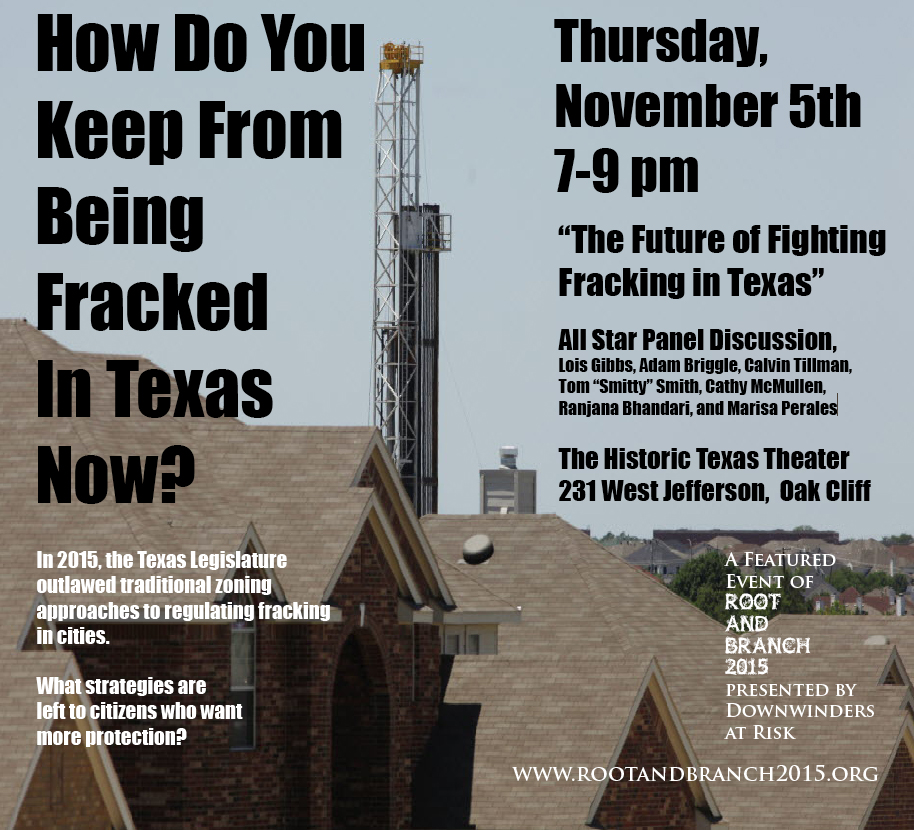 What: “The Future of Fighting Fracking in Texas”
What: “The Future of Fighting Fracking in Texas”
When: 7-9 pm Thursday, November 5th
Where: Historic Texas Theater in Oak Cliff, 231 West Jefferson
Who: Regional and Statewide Activists, Attorneys and Organizers
(Dallas)— A new alliance of groups fighting for more protective fracking regulation in Texas is using a Dallas environmental conference to host the first statewide strategy session responding to the passage of HB40 by this year’s state legislature.
Dubbing itself the “Texas Grassroots Network,” organizers include key members of local groups in Arlington, Denton, and Mansfield. Since their first meeting during the summer, they’ve also received calls from South Texas residents who live in the Eagle Ford gas and oil field. Their aim is to create something Texas has never had – a statewide coalition of grassroots groups tackling the same industry and the same problems caused by that industry setting up shop too close to people.
On the evening of Thursday, November 5th, they’re taking over Dallas’ historic Texas Theater to begin what they say will be a wide-ranging and free wheeling discussion about what the best options for those who don’t want to live side-by-side with drilling rigs in light of the legislature’s restrictions on local zoning.
“It’s time to regroup and come up new ideas and strategies about how to stop irresponsible fracking,” said Tamera Bounds, of Mansfield Gas Well Awareness. “We need to use our anger of what the legislature did to fuel new efforts and recruit new supporters. Most Texans want local control of fracking. Our job is to build a statewide movement reflecting that.”
“The Future of Fighting Fracking in Texas” is the second featured event of local clean air group’s Downwinders at Risk’s four-day floating conference, called “The Root and Branch Revue.” Other conference events include an evening of “environmental comedy” with Bar Politics, a day of workshops aimed at sharpening activist skills, and an attempt to construct “the world’s largest S.O.S” outside EPA Regional Headquarters in downtown Dallas. Lois Gibbs, of Love Canal fame, is the featured guest.
But it’s Thursday’s panel discussion and a follow-up on Saturday that could potentially have the biggest impact on the Texas environmental movement. Many opponents of urban fracking are still reeling from the state’s ban on local zoning restrictions last spring. There hasn’t yet been a coordinated or articulated response. Organizers of the Texas Theater discussion aim to fix that.
Participating will be some of the most high-profile regional fractivists, including Bounds, who’ll moderate, Adam Briggle and Cathy McMullen from Denton, Ranjana Bhandari form Arlington, and former DISH mayor Calvin Tillman. Joining them onstage on stage will be Public Citizen/Texas staffer Tom “Smitty” Smith, Austin-based environmental attorney Marisa Perales, and Lois Gibbs herself.
“HB 40 has forced us to look beyond our own city limits and find new ways to organize residents,” said Bounds. This public strategy session is one of he first steps we need to do that and regain momentum.”

